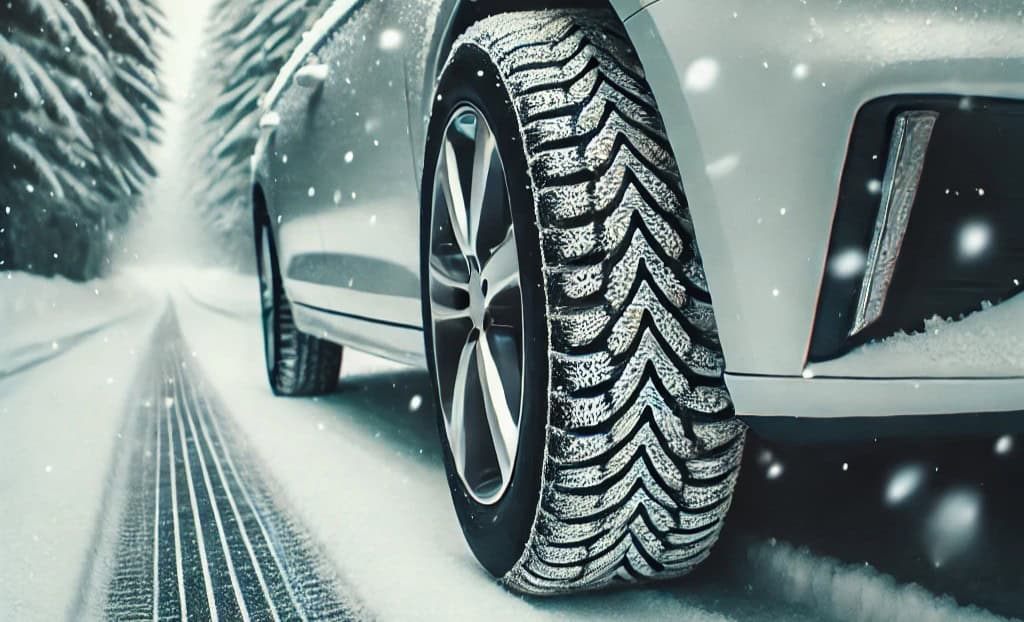
As the winter season approaches, it’s crucial to prepare your vehicle for the cold temperatures and icy roads that often accompany the season. Winter car maintenance is essential to keep your vehicle running smoothly and safely. From snow tires to fluid checks, proper preparation can help you avoid common problems like dead batteries, uneven tire wear, and poor visibility. In this guide, we’ll cover the most important steps to ensure your vehicle is ready for the challenges of the winter months.
1. Check Your Battery
The cold temperatures of winter can take a toll on your car battery. In fact, extreme cold is one of the most common causes of a dead battery. When temperatures drop, batteries lose their power more quickly, especially if they’re already weak. To prevent being stranded, it’s important to check your battery before the winter season kicks into full gear. Look for signs of a weak battery, such as dimming lights or slow electrical responses. If you notice these symptoms, it may be time for a replacement. Additionally, it’s wise to keep jumper cables in your car in case you need a jump-start in colder weather. Regularly inspecting your battery’s fluid level and keeping the terminals clean can also help extend its life throughout the winter months.
2. Inspect Your Tires
Your winter tires are one of the most important components to check when preparing for winter. During the winter season, tire tread depth becomes critical for ensuring traction on icy roads. Worn-out tires or those with uneven wear can increase the risk of slipping on snow or ice. Be sure to check your tire pressure regularly, as cold temperatures can cause it to drop. If your winter tires are worn or the tread depth is insufficient, consider replacing them with snow tires or winter tires. These winter tires are specifically designed to provide better traction in freezing conditions, ensuring your safety while driving .
3. Fluid Checks
Fluids are essential to your vehicle’s performance, and winter driving can place additional stress on your car’s systems. It’s important to check several key fluids before the cold weather sets in. First, ensure that your engine coolant is topped off with antifreeze, as this helps prevent the engine from freezing in subzero temperatures. Winter windshield wiper fluid is another must-have to maintain visibility when road salt and ice build up on your windshield. Additionally, check your brake fluid to ensure your brakes are responsive, and verify that the oil is at the correct level for winter driving. By keeping these fluids in check, you’ll reduce the likelihood of issues caused by freezing temperatures.
4. Wiper Blades and Lighting
Visibility is crucial during the winter months, as snow, sleet, and road salt can obscure your vision. Start by inspecting your windshield wiper blades. If they’re cracked, worn, or leave streaks on your windshield, it’s time to replace them with winter wiper blades, which are designed to handle snow and ice more effectively. Don’t forget to check your headlights, taillights, and turn signals as well. With shorter days and inclement weather, being visible on the road is critical for your safety. Replace any burnt-out bulbs and clean your lights regularly to ensure optimal visibility.
5. Brake System Maintenance
Brakes are one of the most important safety features of your vehicle, and winter driving can place extra stress on them. Icy roads and snow can make it harder to stop, so it’s essential to ensure your brakes are in top condition. If you hear any strange noises, such as squeaking or grinding, or notice that your car pulls to one side when braking, it could be a sign that your brakes need attention. Schedule a brake inspection before the winter season begins to make sure your braking system is functioning properly.
6. Heating and Cooling System Check
In winter, having a functioning heating system is crucial for both comfort and safety. The heater helps keep you warm and clear fog from your windows, while the defroster ensures your windshield stays clear. Test your heater and defroster before the cold sets in to make sure they’re working properly. It’s also wise to check the cooling system to prevent any issues with overheating during the winter months. Low engine coolant levels or leaks in the system can lead to serious problems if not addressed.
7. Winter Emergency Kit
While it’s essential to keep your vehicle well-maintained, it’s equally important to be prepared for emergencies, especially during the winter season. Road conditions can change quickly, and you may find yourself stranded in a snowstorm or with a flat tire. A well-stocked winter emergency kit can be a lifesaver. Some essential items to include are an ice scraper, jumper cables, a flashlight, and a blanket. You should also carry extra winter wiper blades, a first aid kit, and non-perishable snacks. Having these items on hand can help you handle any unexpected situations during winter driving.
Get Your Vehicle Winter-Ready
Preparing your vehicle for the winter season requires careful attention to detail, from checking the battery and tires to ensuring proper fluid levels and visibility. By following this winter car maintenance checklist, you can avoid many common problems and ensure your car is ready for the cold temperatures and icy roads ahead. Don’t wait until the first snowstorm—call us at 623-974-4723 to schedule your winter maintenance appointment today at Pete Nelson Automotive to keep your vehicle running smoothly all season long.


